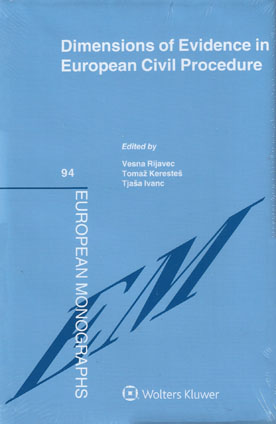We are now closed for the Christmas and New Year period, returning on Monday 5th January 2026. Orders placed during this time will be processed upon our return on 5th January.

Greater efficiency in civil dispute resolution is very much dependent on organized but fair fact- finding. Under European law, however, no clear-cut categoriszation of means of evidence exists as yet, and significantly diverging interpretations persist of what is considered ‘evidence’ in the sense of the foundational Council Regulation (EC) No. 1206/2001 (EER).
The EER fails to provide comprehensive rules for many other aspects of evidence taking, pointing instead to national legislation for solutions. As long as evidentiary rules remain different from country to country, there is an inherent risk of conflict of laws between different systems in the course of cooperation between courts in cross-border matters, leading to mistrust amongst judiciary and other participants in the proceedings.
Focusing on national rules, and using a comparative method which takes into consideration legal experiences from all legal circles in the EU, this book explains and analyses how the law of evidence works in Europe today.
Armed with the wide-ranging knowledge presented here, practitioners handling civil cases anywhere in Europe will derive great practical benefit from this book. As a masterful synthesis of how evidence is used in national courts in EU Member States, and of how that use is changing, the book will be greatly valued as a unique resource by legal scholars and academics. With featured recommendations it can contribute to the development of mutual trust among the national courts inside the EU as well as trust among policymakers and national courts.